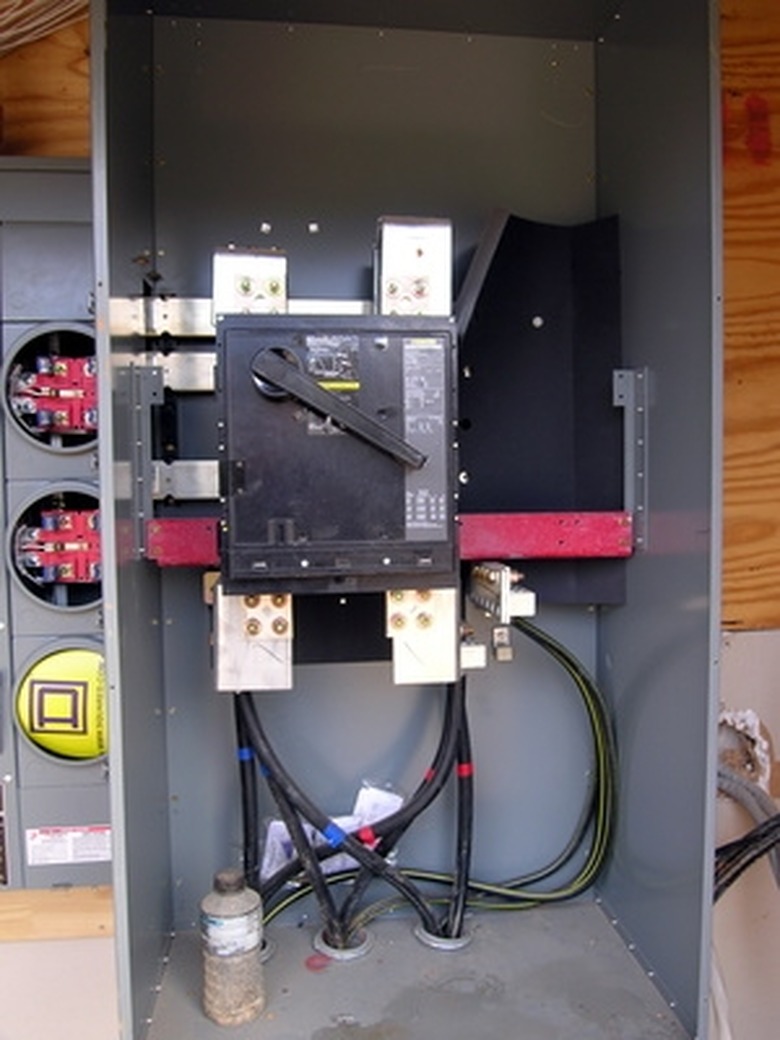How Does A Limit Switch Work?
Limit Switches' Purpose
Limit switches, regardless of their final purpose, can only perform two functions. The switches either activate (turn on) or deactivate (turn off) an electrical circuit. Some of these switches are used in industry, and others are utilized for common household appliances. Most limit switches that are used for the home remain hidden from the user, so at times when something activates or deactivates, it can be a mystery.
Limit Switches in the Home
Limit Switches in the Home
Open the refrigerator and the light comes on. Close the door and the light should go off. That small light switch is actually a limit switch at work. It limits the time the light is on so it is not operating when the door is closed. When the laundry washing machine is under the agitation cycle and you open the top lid, the agitator stops it motion. The switch is hidden from view but the cycle appears to stop. The limit switch that sets just under the top frame cover, removes the "control" voltage from the circuit and stops the washing machine in mid cycle. This type of use for a limit switch is known as a safety limit.
Big Industrial Machines
Big Industrial Machines
People and equipment that are placed in an industrial setting are kept safe by the operation of limit switches. Limit switches generally shut a machine "off" when an action exceeds its travel or position. In other words, if a robot malfunctions, the limit switch will shut down the power to the movement control circuit in much the same way the washing machine stops moving when you open the lid. When you hear the "beep-beep" of a large truck moving backwards, a limit switch was energized when the driver shifted that vehicle into reverse. This action caused electrical power to go to the back-up beeper horn in order to warn people of the action.
Types of Limit Switches
Types of Limit Switches
Limits come in a variety of sizes and shapes, from the size of a loaf of bread to ones so small it may take a magnifying glass to see where to connect the wires. Many limit switches are simple contacts that become electrically conductive in the same way as when you turn on the light switch in the home. Others types of limit switches are called optical proximity switches or magnetic proximity switches. Optical proximity switches utilize two different components. One component shoots an infrared light beam to a receiver mounted at a straight distance away. Much like the television remote does to change the channel. If that light beam is broken, the optical proximity limit switch will open, "turn off" or close "turn on" a circuit to switch the electrical power. A magnetic proximity limit switch is a singular device that will also turn on or turn off when it comes close to a piece of metal. Regardless of the types or sizes of limit switches, these devices can only accomplish a task of activation or deactivation.
Cite This Article
MLA
Bayne, G.K.. "How Does A Limit Switch Work?" sciencing.com, https://www.sciencing.com/limit-switch-work-4924572/. 24 April 2017.
APA
Bayne, G.K.. (2017, April 24). How Does A Limit Switch Work?. sciencing.com. Retrieved from https://www.sciencing.com/limit-switch-work-4924572/
Chicago
Bayne, G.K.. How Does A Limit Switch Work? last modified March 24, 2022. https://www.sciencing.com/limit-switch-work-4924572/
